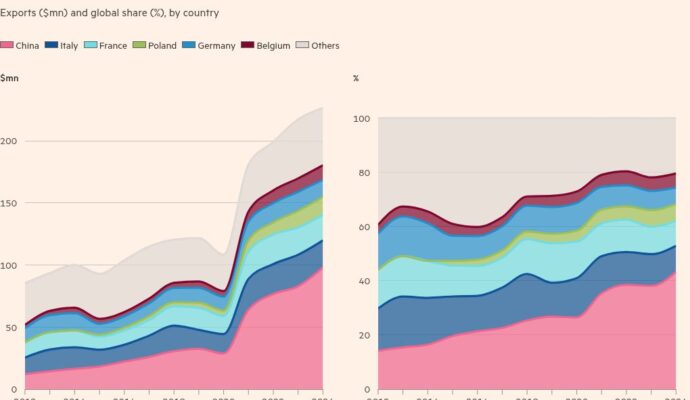
Unlock the Editor’s Digest for free
Roula Khalaf, Editor of the FT, selects her favourite stories in this weekly newsletter.
Last month, the poster child of Japan’s bubble economy finally repaid the government bailout money it received almost a quarter century ago. Once called the Long-Term Credit Bank of Japan, SBI Shinsei Bank’s repayment of roughly ¥230bn ($1.5bn) in public cash signalled the end of an era.
But as interest rates rise, the population falls and deposits become less sticky, Japan’s lenders are facing another period of turbulence. When the dust settles, the banking system could once again look different.
Yutaka Ito, the newly installed head of the powerful markets regulator, the Financial Services Agency, agrees. In an interview with the Financial Times, Ito said some banks “are being confronted by the question of how they can survive”.
The issues are relatively simple but powerful. Japan is coming out of a long period of deflation and interest rates are rising, a positive for some in the banking sector. That has also made deposits more valuable as a source of bank funding. At the same time, however, the country’s declining population means those deposits are potentially going to move through the system more rapidly.
As the younger generation inherits money, they may look to shift it into higher-yielding products, fintechs or simply into banks in the larger cities where they live. That is pushing even the biggest banks to act — buying in fintechs, for example — and leaving the weaker of the country’s roughly 100 regional banks increasingly exposed.
“The regional banks are at the edge because we cannot move away from the regions and we are the ones who are suffering [the most] from the changes in demography in Japan,” said Yuko Kawai, president of regional lender Kochi bank.
Bank of Kochi, sitting on Shikoku, the smallest of Japan’s four main islands, serves as a microcosm of the choices facing the system. Not only is it the second-largest bank in the prefecture, but the population of 650,000 it serves is falling at one of the highest rates in the country.
The prefecture’s working-age population is expected to fall by 10.8 per cent by 2030, from 370,000 to 330,000, according to the Mitsubishi Research Institute. That is an issue for both hiring staff and its business model. About 70 per cent of Kochi’s asset base is made up of loans to local people and businesses. As the population declines, so does the customer base.
What Kawai is doing in response is to increase the value of business with its core customers. That could mean selling more investment and insurance products or increasing its high-margin advisory services for corporate clients, from mergers and acquisitions to IT solutions. This would also make regionals look more competitive in attracting and retaining deposits.
The plan “is not expanding outside of the region, but . . . [to] deepen the user relationship with the clients to widen scope of the business”, Kawai explained.
The FSA is also backing that push, with Ito saying that “even for regional financial institutions, I think it’s becoming necessary to have that kind of investment banking proposal capability”. He wants the regional banks to become a bridge to the so-called megabanks, the country’s dominant lenders such as MUFG and Mizuho.
So far, Kawai says, deposits are not fleeing Kochi — due in part to corporates remaining loyal and wanting to access preferential borrowing rates — but she accepts that it is probably only a matter of time. In the past fiscal year, deposits at a large sample of regional banks increased by 0.9 per cent, compared with 2.7 per cent for the megabanks, according to the rating agency S&P Global.
That is why regional banks are preparing for movement and mergers and partnerships are already taking place. The Japanese government is offering fairly small subsidies of up to ¥3bn for lenders that agree to merge.
Kawai sees part of her job as preparing for a future of potential partnership with non-banks or a merger with another lender. If, as she says, consolidation “is the best solution . . . I may choose that”.
As for Ito, he believes there are many paths forward, from total takeovers by megabanks or larger regionals — those buoyed by booming industry — which would allow smaller lenders to trade under their original names, to cutting costs by sharing IT systems.
He recognises that while the number of banks will probably fall, circumstances will force a more complex reshaping of the system. “So even if the number of banks doesn’t go down, there’s still a way to survive — or rather, to grow and evolve,” he said.


